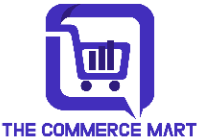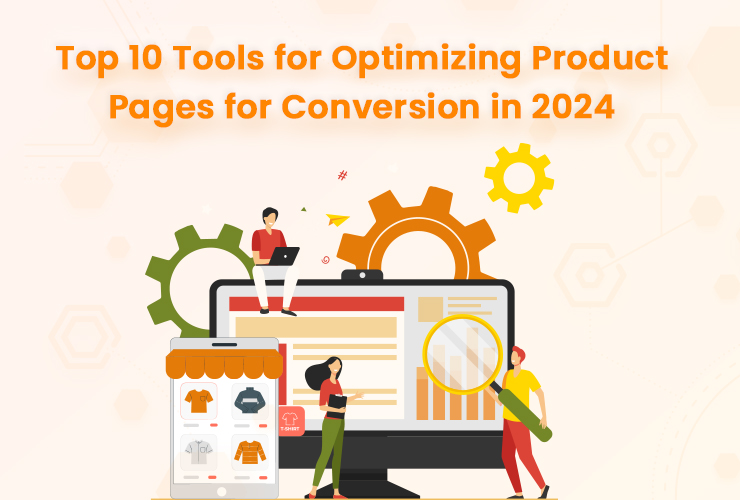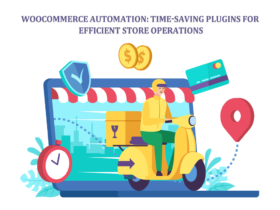What is Conversion Rate Optimization (CRO)?
Conversion rate optimization (CRO) means improving the percentage of website visitors that complete a desired action like making a purchase. For eCommerce companies, optimizing product pages is very important because that is where customers directly buy products.
Why is Product Page CRO Crucial in 2024?
In 2024, effective CRO of product pages is more crucial than ever. With so many options online, if a product page does not connect with customers and move them to purchase, they will just go elsewhere. By optimizing product pages, companies can provide a smooth purchasing journey, build trust through reviews, and highlight their product’s value, ultimately driving more sales.
To optimize product pages, businesses can use CRO tools that provide insights through testing, heatmaps, recordings, surveys, and analytics. When picking a CRO tool, key factors are ease of use, customer support, advanced features, integration with other platforms, and cost. The right tools make CRO more efficient by quickly finding opportunities and allowing ongoing optimization based on changing customer behaviors and needs.
Top 10 CRO Tools for Product Page Optimization
In today’s competitive online market, creating product pages that resonate with customers and convert them into buyers is crucial. Fortunately, numerous Conversion Rate Optimization (CRO) tools can help eCommerce companies and development agencies achieve this goal. These tools provide valuable insights into how visitors interact with product pages, enabling brands to identify areas for improvement and ultimately boost sales.
By leveraging CRO software and strategies recommended by experienced eCommerce development companies, brands can gain a competitive advantage and continuously optimize their product experiences to drive conversion. With the right focus, data-driven insights, and experimentation, transformative product page optimization is within reach for eCommerce businesses in 2024 and beyond.
1. Google Analytics
Google Analytics is the industry-leading website analytics platform, offering robust tracking and reporting for product pages. It captures detailed data on user behavior, traffic sources, conversions, and more. Google Analytics uses cookies and JavaScript tracking code to monitor how visitors interact with product pages. Key behaviors that can be measured include product views, add to carts, checkouts, and purchases.
The platform generates reports with metrics like top-selling products, conversion rates, and revenue. It also provides audience insights by segmenting users into groups for further analysis. Google Analytics is free and easy to set up, though the tool has extensive capabilities that may require expertise to leverage fully. Overall, it provides unparalleled analytics power for understanding the customer journey and optimizing product pages.
Key features include:
- Event tracking to see how users interact with product pages
- eCommerce tracking to measure product performance
- Audience reporting to segment users
Benefits:
- Identify high exiting pages or bottlenecks in purchase process
- See which products get most views/purchases
- Find opportunities to test with other tools
Limitations:
- Can be complex for beginners
- Mostly retrospective data rather than real-time
- Limited heat mapping capabilities
2. Hotjar
Hotjar is an advanced analytics and feedback platform with features tailored for improving product pages. Its main tools include heatmaps, session recordings, surveys, and polls. Heatmaps visualize where users click, tap, and scroll on product pages, revealing engagement patterns. Session recordings create sample videos of real visitor sessions for qualitative analysis. Hotjar’s survey and poll features allow product teams to gather direct input from customers about their experience.
Together these capabilities provide well-rounded insights into usability issues, pain points, and optimizations to improve product pages. Hotjar integrates with most websites by adding a small tracking code. The platform is paid with different pricing tiers based on features and traffic volumes. Although setup requires some technical work, Hotjar provides invaluable first-hand data that is easy to interpret for product page optimization.
Key features:
- Heatmaps show click patterns and scroll depth
- Recordings let you watch real user sessions
- Form & survey tools get direct customer feedback
Benefits:
- Identify usability issues and shopping cart abandonment points
- Pinpoint areas users actually focus on a page
- Gather qualitative data from customers
Limitations:
- Can only replay sample recordings, not full history
- Setup requires adding tracking code to site
- Heatmaps have no user identifiers
3. Crazy Egg
Crazy Egg is a visual analytics tool that helps uncover how users interact with product pages through heatmaps, scroll maps, and click tracking. Its heatmaps visualize where visitors click most frequently to highlight engagement areas. Scroll maps show how far down visitors scroll on product pages to identify above-the-fold issues. Click tracking creates aggregated click reports to see common paths taken.
Crazy Egg makes it easy to spot usability problems, optimize page content, and improve product findability. The tool is implemented by adding a tracking pixel to pages. It offers a free plan with limited history as well as paid plans for more data. While it lacks recording and survey capabilities, Crazy Egg provides focused insight into product page interaction and conversions.
Key features:
- Heatmaps to see click patterns
- Scroll maps to analyze scrolling behavior
- Click tracking to understand navigation paths
Benefits:
- Identify engagement levels on different page elements
- Improve page layout based on interaction data
- Make informed design changes to boost conversion
Limitations:
- Only shows aggregate clicks, not individual user sessions
- Short data history on free plan
- Lacks qualitative feedback capabilities
4. Kissmetrics
Kissmetrics is an advanced analytics platform for optimizing product pages and tracking customer journeys over time. It goes beyond page views to tie user actions to identities across visits. Kissmetrics provides cohort reports to analyze how groups of users behave across acquisition, activation, revenue, and retention stages. For product pages, it calculates conversion rate optimization metrics like click-through rate and average order value.
Kissmetrics also offers funnel reporting to see where customers drop off in the purchase process. The tool is implemented through tracking JavaScript code and integrates with platforms like Shopify and WooCommerce. Pricing is based on monthly active users, with enterprise options available. While mainly focused on long-term analytics, Kissmetrics provides the product usage data needed to measure optimization efforts.
Key features:
- Cohort reporting to analyze user segments
- Funnel reporting to understand shopping cart drop off
- eCommerce tracking and metrics
Benefits:
- Identify underperforming user groups and pages
- Improve product findability and navigation
- Measure conversion rate impact of optimizations
Limitations:
- More focused on long-term analytics
- Limited qualitative data like heatmaps
- Setup requires developer assistance
5. Optimizely
Optimizely is a leading A/B testing and optimization platform used by enterprise brands to experiment on product pages. Its visual editor makes it easy to create variations by modifying page elements like images, copy, layouts, etc. Optimizely offers advanced targeting to test experiences on specific audiences.
It provides detailed reporting on the impact of optimizations with stats on conversions, revenue, engagement and more. Tests can be run directly on live pages to gain learnings while minimizing disruption. Optimizely further integrates with data platforms to store test results. The tool empowers experimentation at scale to maximize product page performance.
Key features:
- Visual editor to easily build page variants
- Advanced targeting and segmentation
- In-depth reporting on test results
Benefits:
- Test changes to copy, media, offers, and more
- Target experiences to high-value segments
- Analyze results to identify winning variants
Limitations:
- Requires developer help to install
- Higher learning curve than some competitors
- Pricing may be prohibitive for smaller companies
6. Unbounce
Unbounce is a landing page builder and CRO tool optimized for marketers. Its drag-and-drop editor makes it easy to customize product landing pages and run A/B tests without coding. Unbounce offers a library of templates, assets, and best practices tailored to ecommerce. Its native analytics provide conversion data on experiments without needing extra tools.
Unbounce also lets users build pop-ups, sticky bars, and other attention-grabbing elements to boost conversions. The tool is ideal for marketers to test campaigns and simplify complex product pages without developer help.
Key features:
- Drag-and-drop page builder requiring no coding
- Pop-ups, sticky bars, and other high-converting elements
- Built-in analytics to test landing page variants
Benefits:
- Empowers marketers to optimize and experiment
- Provides access to templates and best practices
- Easy creation of attention-grabbing page features
Limitations:
- Focus is on campaign landing pages more than core site
- Primarily used by marketers rather than technical teams
- Lacks advanced segmentation and targeting
7. Leadpages
Leadpages is a landing page builder and A/B testing tool designed for marketers. It makes it easy to create customized landing pages for campaigns and products without coding. Leadpages has hundreds of mobile-friendly templates and drag-and-drop modules to optimize page layouts.
It allows splitting traffic to test variants of headlines, copy, images, offers, etc. Leadpages integrates with email and webinar platforms like MailChimp and GoToWebinar for complete funnel building. Robust analytics are provided to understand conversions. While focused on campaign landing pages, Leadpages empowers marketers to quickly test and iterate on product pages.
Key features:
- Drag-and-drop page builder with mobile-friendly templates
- Built-in A/B testing capabilities
- Integrations with email and webinar platforms
Benefits:
- Quickly create high-converting product landing pages
- Test different page elements like copy and headlines
- Map out the complete funnel from product page to purchase
Limitations:
- Primary focus is on campaign landing pages vs core site pages
- Less robust analytics compared to dedicated CRO platforms
- Limited technical customization available
8. VWO
VWO is an advanced conversion rate optimization platform supporting A/B testing and personalization on product pages. Its visual editor makes it easy to modify page elements for testing using an intuitive what-you-see-is-what-you-get (WYSIWYG) interface. VWO offers advanced targeting options to test experiences on user segments based on behavior, location, tech, etc.
Detailed analytics measure the impact of optimizations on key conversion and revenue metrics. VWO further provides personalization capabilities to serve tailored content and offers to users. Support options like 24/7 chat and customized onboarding aim to get companies set up and optimizing quickly.
Key features:
- Visual editor to build and target test variations
- Advanced analytics to measure optimization impact
- Personalization to deliver tailored experiences
Benefits:
- Conduct A/B tests across page elements and audiences
- Identify improvements that provide the biggest lift in conversions
- Create personalized product recommendations
Limitations:
- More complex setup and onboarding compared to basic A/B testing tools
- Potentially deeper integration with tech stack required
- Pricing can be expensive for smaller businesses or budgets
9. Custellence
Custellence is a user research and feedback platform for optimizing product pages. Its main capabilities include user interviews, design surveys, and usability testing. Custellence facilitates recruiting real users that match target personas for remote interviews to gain qualitative insights. Its survey builder creates engaging polls and NPS feedback forms that can be embedded into product pages.
Custellence also supports moderated usability testing by allowing users to provide feedback on designs and prototypes. By gathering first-hand data directly from customers, teams can identify pain points and opportunities to optimize pages. Setup requires adding a tracking code to collect responses.
Key features
- User interviews to gain qualitative insights
- Embedded surveys to collect feedback
- Moderated usability testing on prototypes
Benefits:
- Direct customer input on preferences and pain points
- Quick validation of designs before building
- Ongoing feedback once live for further optimization
Limitations:
- Smaller sample sizes than quantitative tools
- Requires expertise to ask the right questions
- Time intensive to conduct one-on-one interviews
10. Smaply
Smaply is a user experience research platform supporting diary studies, card sorting, prototype tests, and other techniques to optimize product pages. Diary studies have users record feedback over time to identify usability issues. Card sorting helps optimize information architecture and navigation. Prototype testing gathers feedback on proposed designs through first-click tests and preference ratings.
Smaply makes it easy to recruit and incentivize participation from target users. The platform synthesizes both qualitative and quantitative data to uncover optimization opportunities. This user-centric approach ensures product pages align with customer needs and expectations.
Key features:
- Diary studies to uncover usability issues
- Card sorting to optimize IA and navigation
- Prototype testing to gather feedback on designs
Benefits:
- Detailed qualitative insights from real users
- Validate designs and site architecture
- Ongoing feedback to guide iterative optimization
Limitations:
- Smaller sample sizes than big data approaches
- Can be more time intensive than purely analytic tools
- Requires expertise in UX research methodology
Implementing a Successful CRO Strategy for Product Pages
Defining your conversion goals for product pages
- Clearly identify your desired conversion actions – this may be purchases, email signups, downloads etc. Align your goals to business objectives like revenue growth, list building etc.
- Use analytics to quantify your baseline conversion rates for each goal you set. This benchmark is key for measuring optimization impact.
Identifying key areas for improvement
- Leverage analytics and research tools to find drop-off points in the customer journey where optimization is needed.
- Look for pages with high exit rates, low time on page, or low click depth as indicators.
- User interviews and surveys can reveal pain points directly from customers.
Selecting the right CRO tools for your needs
- Audit your technical capabilities and resources to determine what tools integrate well.
- Prioritize ease of use to enable testing and optimization by non-technical users.
- Consider tools that provide a combination of quantitative and qualitative data.
Setting up and running A/B tests
- Start with key pages and changes that align with major conversion goals.
- Limit test variations to single elements like copy, layout, images etc.
- Use page analytics to determine sample size needed and run tests for optimal time.
Analyzing data and interpreting results
- Look at both statistical significance and the size of uplift to identify winning variations.
- Leverage segmentation and cohorts to understand performance for key audiences.
- Qualitative tools can provide context on why certain variants perform better.
Iterating and continuously improving your product pages
- Build a roadmap for ongoing tests based on priority areas uncovered in research.
- Schedule recurring tests e.g. for seasonal promotions, new products etc.
- Foster a culture of experimentation and optimization to stay ahead.
Conclusion
Effective product page optimization is essential for eCommerce success today. Companies that implement a data-driven CRO process will gain a competitive advantage.
The key is using a mix of analytics, A/B testing, and customer feedback to drive continuous improvement. By constantly experimenting, analyzing, and iterating, product pages can be refined to maximize conversion rates. Companies that embrace ongoing optimization will see compounding benefits over time as their product experiences evolve based on performance data and user insights. With the right tools and focus, transformative product page CRO is achievable for forward-thinking eCommerce businesses.






Leave a Reply